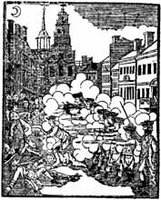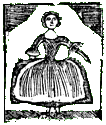Independence and Enslavement in Middletown
In 1784, Hugh White left that town to start surveying an area of upstate New York that would become Whitestown. Relatives and neighbors would follow. The central part of that area would take the name Whitesboro and for a long time have an unfortunate town seal.
Other Middletown residents also moved west to lands made available by the U.S. victory over Britain and its Native allies. Retired general Samuel Holden Parsons became a director of the Ohio Land Company. He traveled to western Pennsylvania in November 1789 and drowned while canoeing.
There were also legal changes at home. The area around the Connecticut River port, where the merchants and ship-builders lived, incorporated itself as a city in 1784. Instead of a town meeting with nearly every farmer eligible to vote, the city of Middletown had a mayor, four aldermen, and ten “common-council-men” chosen from the upper class.
The first set of aldermen included two former generals—Comfort Sage and the ill-fated Parsons—plus Col. Matthew Talcott and, for old times’ sake, former militia captain Philip Mortimer.
Among the first common-council-men was the husband of Mortimer’s favored niece, George Starr, as well as Col. Return Jonathan Meigs.
Also in 1784, the state of Connecticut passed a Gradual Emancipation Act—so gradual that it didn’t actually emancipate anybody for another twenty-five years. Children born into slavery after 1 Mar 1784 would become free on their twenty-fifth birthdays.
The 1790 U.S. Census counted 2,648 people enslaved in Connecticut, alongside 2,771 free blacks. The person who owned the most other people in the state—eleven by official count—was Philip Mortimer.
Back in Boston, as we know from newspaper advertisements, Mortimer employed at least one Irish teenager at ropemaking in 1738, and he imported young indentured servants from Ireland in 1740 and 1741. Maybe he enslaved Africans then, too, but he was doing so in a big way (by New England standards) in 1790.
That number grew to seventeen by July 1792. Mortimer then listed the people working for him for free as:
- Bristol, married to Tamer
- Hagar and her daughter
- Jack, Sophy, and Sophy’s sons Lester, Dick, and John, all under age fourteen
- Amarillas and her children
- Silvy
- Peg, still under the age of twenty-six
- Peter and Prince
TOMORROW: Freedom, but not yet.












